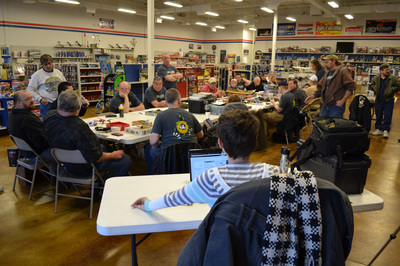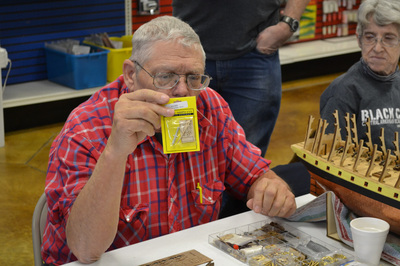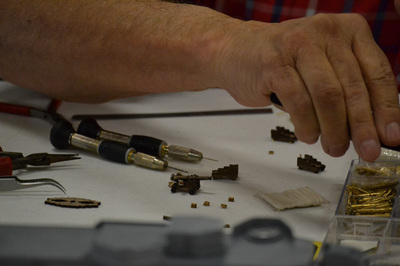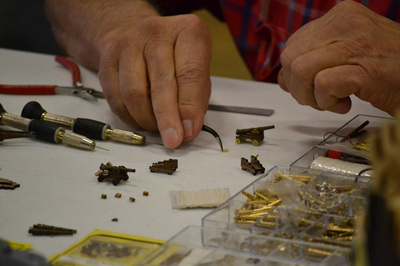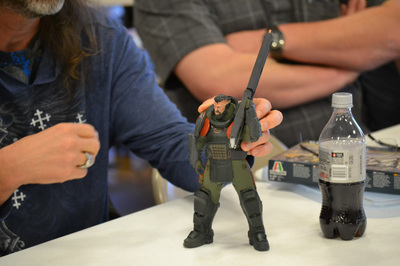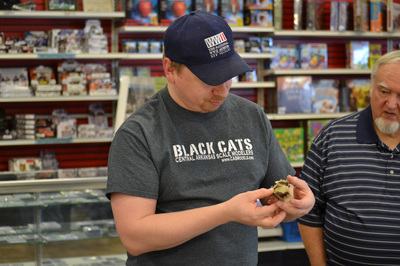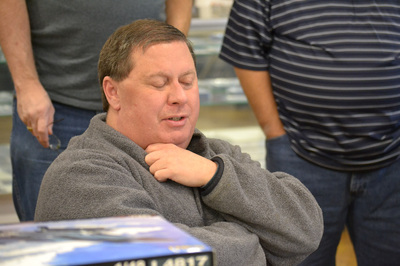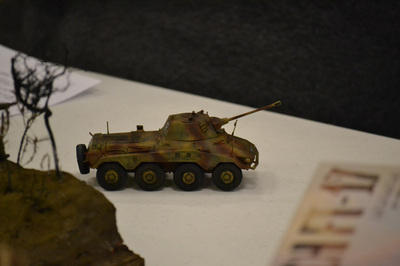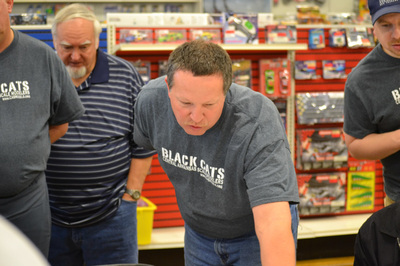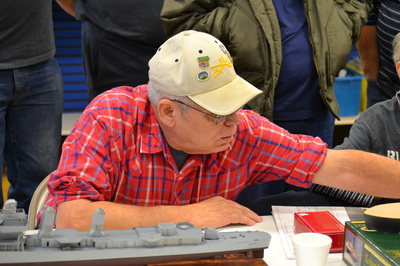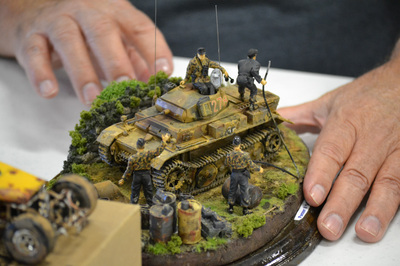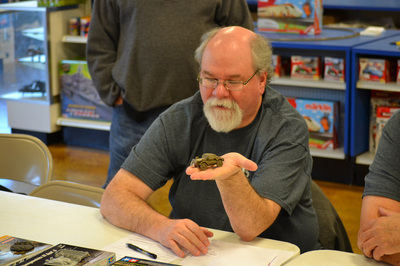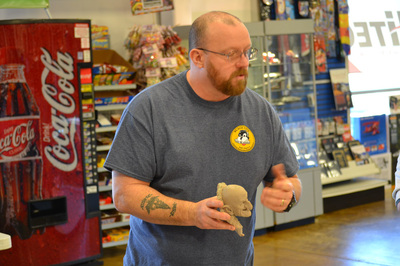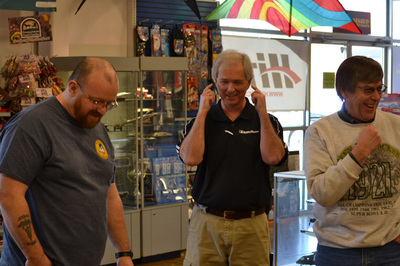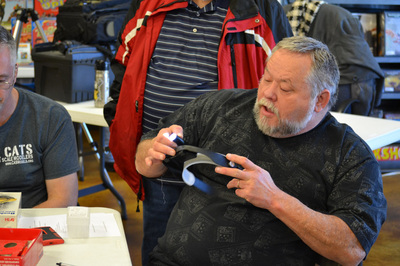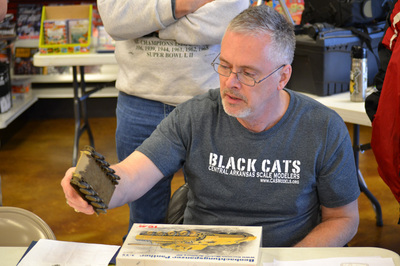|
Another fantastic CASM club meeting on January 10th. Here is a gallery of photos from that meeting featuring CASM modelers and their works.
0 Comments
Article by: Rick Knapp The M41 “Walker Bulldog” was the U.S. Army’s replacement for the Chaffee light tank of World War II and the Korean War. While it never saw combat with U.S. forces, the M41 was used by many countries around the world, most notably seeing action with the armed forces of South Vietnam. Tamiya’s kit of this vehicle is now forty years old. At the time the kit was produced, as with many other armor models, close enough apparently was good enough. Newer, more accurate M41 kits are now available, but since I had the old Tamiya offering languishing in a closet along with an Eduard photo-etch set for dressing it up, I optimistically set out to see what I could make of this antique. In addition, the fact that a fellow modeler told me I’d never make anything decent from this old kit might have provided some extra incentive. The lower hull and suspension of the Tamiya kit are mostly adequate, but the loop tracks are not. At present I am waiting for a set of Friulmodel tracks and hoping that the set will include drive sprockets and idler wheels with lightening holes. Otherwise, the only addition made to the tank’s lower reaches consisted of the D-shaped loops on the bottoms of the return roller shafts; these were used in securing the vehicle during rail transport. Surveying the Tamiya Bulldog’s upper hull, the omission of the prominent reinforcing ribs on the outboard sides of the vehicle’s fender-mounted stowage boxes really stands out. The Eduard set provides thin photo-etched panels for correcting this, but only three of these panels are usable. The right-hand forward box is longer than the left-side box, but the Eduard panels for these two boxes are identical. I had to use styrene strip to replicate the ribs on the longer stowage box. There are a great many omissions in the forward portion of the Tamiya upper hull. I made circular lift rings from solder wire, reinforced them with gap-filling superglue, and placed them where they belong in front of the tank’s headlamps. The brass headlamp brush guards from the Eduard set were used; the Tamiya parts are actually more accurate, but they are massively thick. I added a scratch-built blackout lamp with a brush guard made from paper strip and wired all the lamps. The M41 had fender supports that are missing from the Tamiya kit. Eduard came to the rescue here. The parts that support the driver’s hatch of the M41 when opened are also noticeably absent; these I made using styrene rod and strip. I filled the empty spaces of the driver’s periscope housings with styrene strip and used plastic strip to replicate the upward-angled rain guards at the tops of the periscope housings. For the most part, Eduard brass parts provided the hardware for securing a tow cable made with end parts from the spares box and braided solder wire. I say for the most part, because one of the Eduard parts flew off into the Great Beyond during construction; a styrene substitute was fashioned. The other major addition to the upper hull was the piping and muffler for the auxiliary generator. The Tamiya kit represents an early model M41 with this muffler mounted atop the heat shroud for the starboard engine muffler. Plastic rod, a plastic bedroll sanded and puttied into shape, paper straps, and a few other plastic bits did the job for the auxiliary muffler. I added retaining chains to the various filler caps on the engine decks, but when it came to other of the smaller hull features that could be “improved” via the Eduard Photo-etched parts, I did a sort of cost-benefit analysis. I decided that trying to remove the stowage box handles and the multitude of lifting handles on the engine deck and replace them with delicate and hard-to-handle brass bits would probably do more damage than good. I followed the same course with some of the potential improvements to the tank’s turret. To construct a better turret for the Bulldog, I used Eduard brass where details were entirely missing, where fashioning and using the brass parts looked feasible, and where they would be an actual improvement. I used the kit grab irons for the turret sides, for instance, deciding that they were preferable to their very delicate brass replacements. The armored guards above the commander’s and gunner’s periscopes were actually better than their PE substitutes; the Eduard pieces are much too thin and bend at right angles where the real things were curved. Replacing the jerry-can holders that are mounted on each side of the turret’s rear stowage box with Eduard parts was a must; the Tamiya parts are a combination of holder and jerry can, and are very poor. I fashioned the retaining clip for the .50 cal. Machine gun from a spares-box part and styrene strip. The machine gun itself is an Academy product; the Tamiya .50 is unusable. The Tamiya kit’s solid hatch lifting handles were replaced with parts from an Italeri Sherman. The most daunting task was the replication of the canvas weather cover for the tank’s mantlet, but since every M41 in service had one fitted, this was a must. This was definitely a “do the best you can” effort, but fortunately I had good photos to work from. With tissue paper, lots of liquid-styrene and white glue, plastic rod, paper strapping, and other plastic bits, I was able to fashion an imperfect, but (I think) convincing cover. To go along with this dressed-up retro kit, I plan to have the original commander figure in the cupola. I’ll do a little work on him, but he still looks pretty good. After all, he’s just in his forties. I added quite a few other touches here and there to dress up and “accurize” things. As usual, more could have been done, but I did manage to address the old Tamiya Bulldog’s most glaring deficiencies. As always, there’s something extra satisfying in taking an ancient plastic model and bringing it up to an acceptable standard. In other words, the project was challenging but fun. |
Archives
February 2017
|









